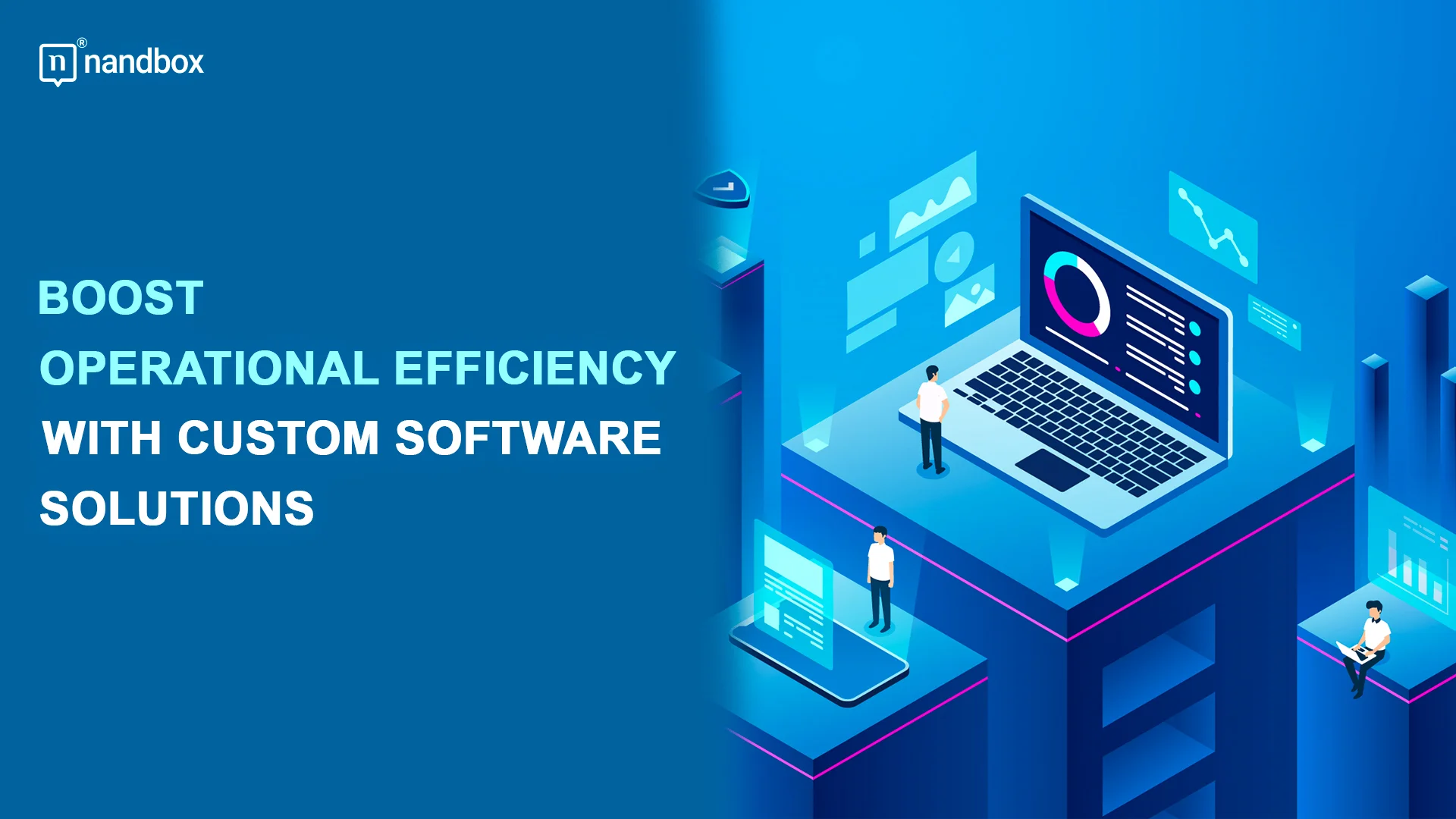Companies lose up to 30% of their yearly revenue because of inefficient processes. This harsh reality makes organizations look for ways to optimize their operations and cut out wasteful practices. Custom software development helps organizations turn their unique workflows into automated, optimized processes. Standard off-the-shelf solutions don’t work well with specific operational challenges. Customizable business software removes unnecessary steps that slow down productivity. Custom software development does more than simple automation. Organizations can control their digital tools better, expand their operations, and stay ahead of competitors. We’ll explore how businesses can use custom software solutions to boost their efficiency and stimulate growth.
Strategic Implementation Planning
A clear strategy paves the way to successful software implementation. Small businesses need the quickest ways to stay competitive against large corporations. Organizations can boost efficiency and avoid common pitfalls with a well-laid-out implementation strategy.
Assessing Current Operational Bottlenecks
Identifying operational slowdowns comes first. Companies risk wasting their investment and losing long-term system value without proper implementation plans. A full picture should get into:
- Process delays and queues
- Resource utilization rates
- Communication gaps
- Workflow interruptions
- System performance issues
Setting Clear Performance Metrics
Specific, measurable goals help track implementation success. The core team should focus on these key metrics:
- Cycle time measures work duration from start to completion.
- Lead time tracks the total duration with wait times.
- Response time shows how quickly teams begin tasks, and resolution time reveals total problem-solving duration.
The global custom software solutions development market projects 22.4% growth from 2023 to 2030. This growth makes selecting the right performance indicators vital to success. Data availability and measurement tools should guide KPI selection.
Developing Implementation Timelines
Project scope determines implementation duration. Large projects usually need:
- 25+ screens
- Multiple platform support
- System integrations
- Complex business logic
- Data migration requirements
A custom software development service helps create realistic timelines based on project complexity. Teams can minimize unexpected events through regular monitoring during implementation. 76% of project managers say progress monitoring prevents project failure effectively. Early implementation stages bring expected challenges. A dedicated implementation team with representatives from different departments improves adoption rates and addresses department-specific needs quickly.
Maximizing ROI Through Automation
Smart automation is the lifeblood that maximizes returns on software investments. Companies using process automation report a 59% reduction in operational costs.
Key Processes for Automation
The highest ROI comes from automating these core processes:
- Customer relationship management and service delivery
- Financial operations and reporting
- Supply chain and inventory management
- Employee onboarding and HR processes
- Marketing campaign management
Cost-Benefit Analysis Methods
A custom software solutions development service helps businesses review potential returns through systematic analysis. Companies save $88 per task on average through automation. The analysis should consider:
Original Investment + Implementation Costs = Total Investment
- Hardware expenses
- Training requirements
- Support services
- Maintenance fees
Performance Monitoring Systems
Proper monitoring verifies ROI and spots areas needing improvement. 90% of workers report increased efficiency through automation. Success tracking needs:
- Clear KPIs set early in development
- Regular performance reviews
- Data collection automation
- Immediate monitoring dashboards
The system’s optimal performance and maximum long-term returns need 15-20% of original development costs annually for maintenance and support. Business process automation software reduces human errors and speeds up core operations. Organizations that use customizable business software experience faster processing times with fewer operational slowdowns.
Employee Adoption Strategies
Employee buy-in and proper training determine successful software adoption. Organizations prioritized user adoption achieve 80% higher success rates in their software implementations.
Training Program Development
A custom software development service should include complete training solutions. Successful training programs consist of:
- Role-specific learning paths
- Hands-on practice sessions
- Digital job aids and reference materials
- Regular knowledge-sharing sessions
- Ongoing support resources
Change Management Techniques
Strategic communication and support drive effective change management. Companies using proper change strategies achieve 89% higher customer satisfaction rates. The leadership team needs to find internal champions who promote the new system and help their peers. Early feedback loops benefit organizations during implementation. Teams can spot potential roadblocks and address concerns quickly through regular check-ins. 76% of employees show more engagement when they take part in the change process.
Measuring User Satisfaction
User satisfaction metrics reveal adoption success. Organizations monitor these key indicators:
- Active user rates
- Feature utilization
- Time-to-value measurements
- Support ticket volumes
Teams can identify trends and improve through regular satisfaction surveys. Companies that track user satisfaction consistently see a 6% increase in productivity within three months. Support teams should review feedback patterns and make changes based on user input. Trust and adoption rates improve with quick responses to user concerns. Organizations need dedicated channels for feedback and questions. Teams using customizable business software report higher satisfaction levels with consistent support and clear updates about system changes.
Performance Optimization Framework
Companies that make performance optimization their priority grow 6x faster in their digital initiatives. Their systematic optimization approach creates measurable improvements in business operations of all sizes.
Evidence-Based Decision-Making
Business decisions improve with proper data analysis. Companies that use evidence-based strategies achieve improved customer satisfaction and more accurate strategic planning. A custom software development service helps businesses collect and analyze:
- Customer feedback patterns
- Market trend indicators
- Financial performance data
- Resource utilization rates
- User behavior metrics
Continuous Improvement Cycles
The Plan-Do-Check-Act (PDCA) cycle powers continuous improvement. Companies that implement PDCA experience a significant reduction in process bottlenecks. The cycle works through these steps:
- Plan: Identify opportunities and create change strategies
- Do: Implement changes on a small scale
- Check: Analyze results using data
- Act: Roll out successful changes broadly
Success Metrics and KPIs
The right metrics guide optimization efforts effectively. Companies that track appropriate KPIs achieve 76% higher project success rates. The most important performance indicators include:
- Net Promoter Score (NPS)
- Customer Satisfaction Score (CSAT)
- Time to Market
- Annual Recurring Revenue (ARR)
- Return on Investment (ROI)
Performance testing confirms optimization efforts. Teams can catch issues early through regular monitoring and reduce fix costs by 40-50%. Speed and user experience metrics deserve equal attention. Quality assurance plays a central role in performance measurement. Software teams that use evidence-based testing achieve faster problem resolution and better code quality. High standards stay consistent through regular performance audits that reveal new optimization opportunities.
Conclusion
Custom software revolutionizes how businesses operate by targeting specific processes and automating key tasks. Companies that implement these solutions achieve remarkable results—from 30% revenue recovery to 59% lower operational costs. These wins come from well-planned strategies, smart automation choices, and effective employee adoption programs. A custom software development service produces measurable outcomes through systematic implementation and fine-tuning. Organizations using informed strategies while monitoring performance consistently grow up to 6 times faster in their digital projects. Smart automation decisions combined with complete employee training lead to lasting operational improvements. Teams can maintain peak system performance and maximize ROI through consistent reviews and ongoing optimization. Operational excellence begins when companies identify their specific business needs and select appropriate technology solutions. Businesses investing in custom software development gain a competitive edge and set themselves up for continued growth in their markets.
nandbox App Builder
Without the requirement for coding, nandbox App Builder enables companies to improve productivity and optimize processes with unique software solutions. Businesses may create fully configurable apps that are suited to their particular workflows using its no-code platform, which improves automation and gets rid of inefficiencies. In contrast to off-the-shelf software, nandbox enables companies to scale easily, automate procedures, and integrate key features, all of which lower operating costs and increase productivity. nandbox App Builder offers a strong, intuitive solution for digital transformation, whether it is for supply chain optimization, staff onboarding, or customer relationship management. Businesses can improve customer experience, maintain competitiveness, and achieve long-term success by utilizing nandbox.







